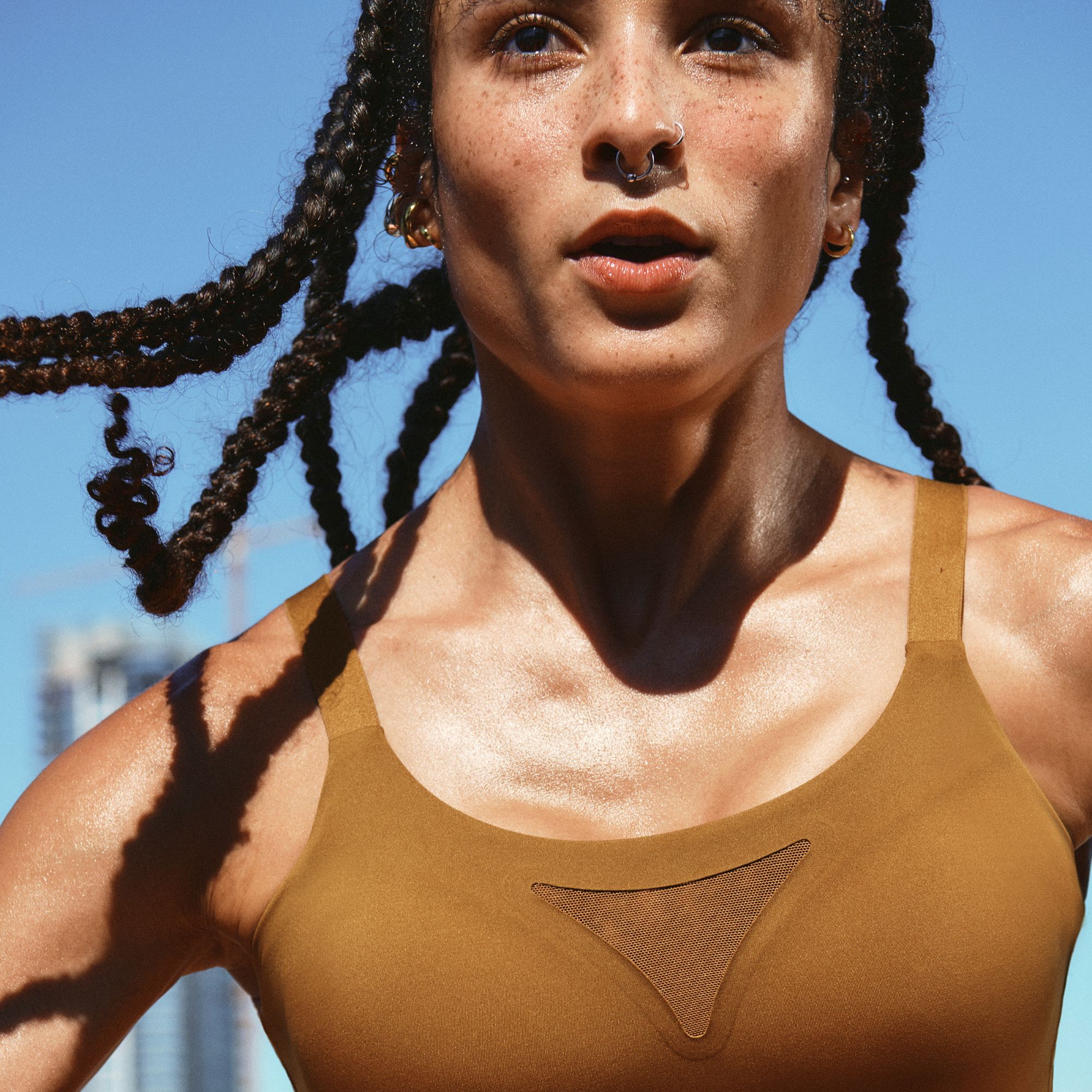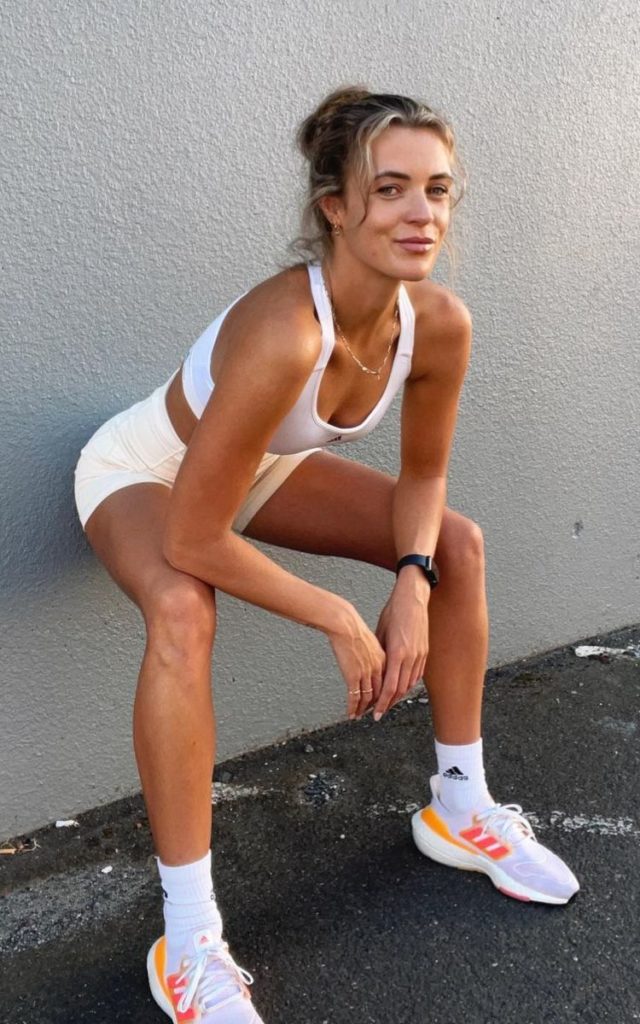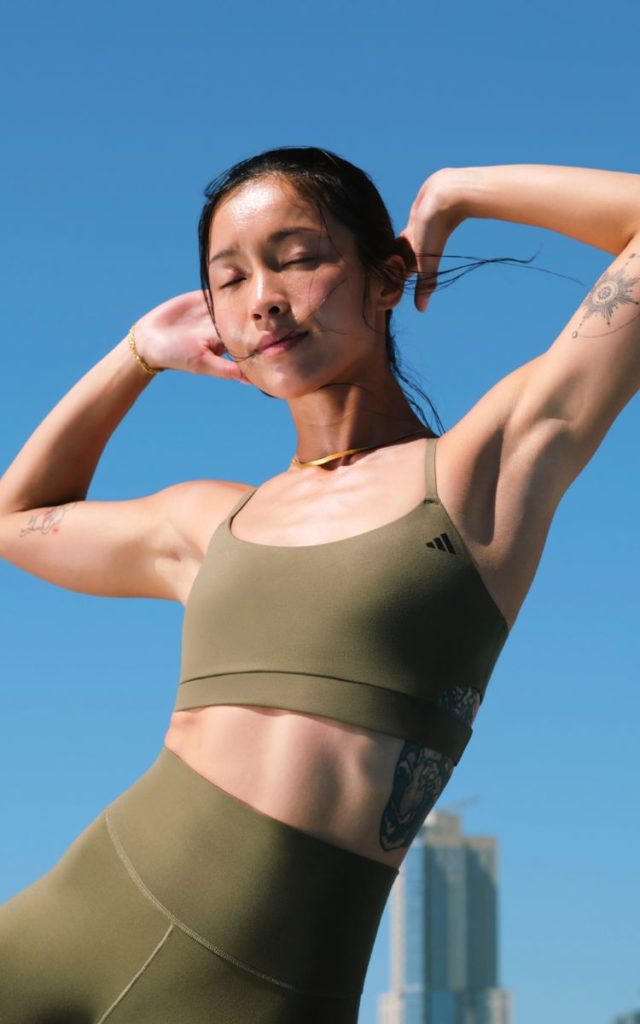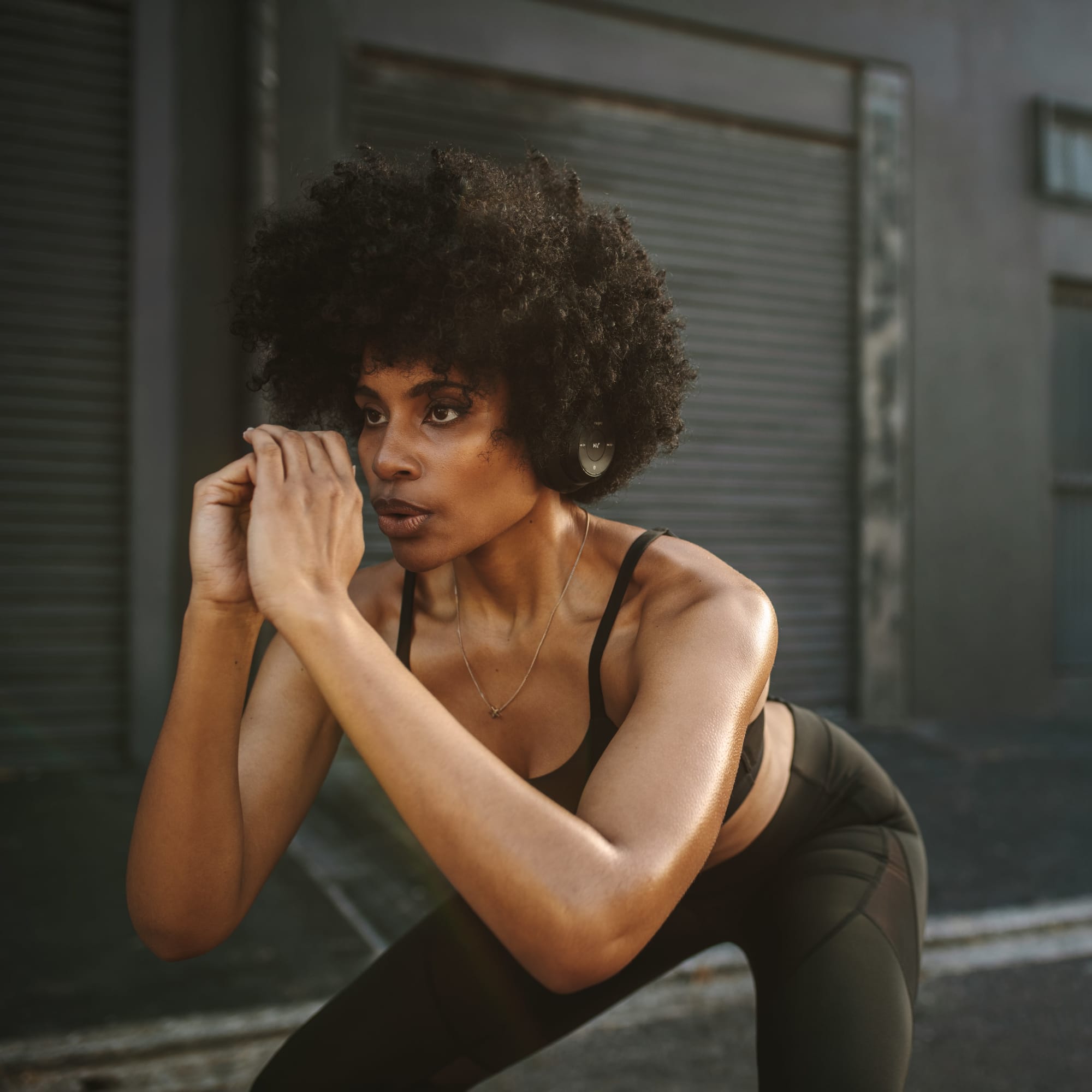
- POPSUGAR Australia
- Fitness
- Turns Out Strength Training Is Essential, So Why Do So Many of Us Avoid It?
Turns Out Strength Training Is Essential, So Why Do So Many of Us Avoid It?

As POPSUGAR editors, we independently select and write about stuff we love and think you’ll like too. POPSUGAR has affiliate and advertising partnerships so we get revenue from sharing this content and from your purchase.
When I think of strength training, I think of the first gym I ever went to. I won’t name it, but it smelt like Lynx, mouldy towels and was not a vibe. But to be fair, I’ve never been huge on exercise.
I ditched anything resembling HIIT around the time the beep test stopped being a mandatory feature in my life, and never figured out a method of lifting weights that didn’t leave me laid out with neck pain and migraines for days on end.
Another contributing factor? I’m going to be totally transparent — like many women growing up in the 90s and 2000s, I’ve been culturally conditioned to aspire to a smaller body, and fear “bulking up.” It’s caused me some grief, and it’s something I’m constantly in the process of unlearning. But, it attracted to me to the one form of exercise I do on the reg: pilates.
Strength and resistance are a part of pilates, so I’ve always been perplexed that my lean muscle mass is more like no muscle mass, despite my regular attendance.
I’ve always attributed this to being someone who just… isn’t very strong, but I recently worked out for two days with a personal trainer and Adidas ambassador Britt Cutts, and realised I’ve been selling myself short in my fitness regime.
Cutts is both a legend and a straight talker, and she walked me through some of the many misconceptions about building lean muscle mass, why it’s important, and how to find balance in our fitness routines.

What Is Lean Muscle and Why Is It Important?
Cutts says my reservations and around strength training are fairly common, and that she hears them from her clients all the time. From the fear of getting too “bulky”, to less-than-ideal first experiences at gyms, strength training is one of the hardest styles of exercise to get into.
Because so many women and people assigned female at birth avoid strength training, many don’t “know what to do with weights”, Cutts says, “or how to structure them into their week based on specific goals”.
But building lean muscle is particularly important for people assigned female at birth. Studies have indicated that as few as 20 per cent of us engage in strength training regularly, with body image a major contributing factor.
According to Queensland Health, adults lose about 1 per cent of muscle mass each year, and inactive adults can lose between 3-8 per cent annually.
Muscle mass impacts more than just lifting stuff or looking toned — it affects balance, speed and bone density. This last factor is particularly significant, because oestrogen plummets after menopause, which leads to a rapid decrease in bone density. Underweight people with low muscle mass are particularly at risk of osteoporosis, which means fragile bones.
Related: I Got Naked and Talked Body Image, Self Acceptance and Toxic Tanning Culture With Jules Von Hep
Cutts also says that concern around “bulking” up is not founded on facts. Rather, lean muscle is basically your lean body mass and a natural part of our body composition, while bulk muscle is artificial.
What this means is that for women and people AFAB, strength training with light weights will build lean muscle and add to a healthy body composition. It will also mean that you continue to burn energy while the body is at rest.
Meanwhile, in order to bulk up, you’d have to go out of your way to achieve that — it’s not something that just happens. This is why bodybuilders typically consume massive amounts of calories; they have to counteract the energy passively burnt through strength training.
So, unless you’re finishing your workout and smashing three protein shakes and a cheeseburger, the likelihood you’ll wake up with the body of an MMA fighter is low.
But what if, like me, you just can’t build the muscle? Again, I am incorrect.
“You should never feel limited by the body you’ve been given,” Cutts says.
If you have pre-existing injuries or are new to strength training, starting slow is essential, but anybody can build muscle. For example, Cutts suggests starting with moderately resistant band work if you’re prone to neck pain. “This will strengthen the muscles surrounding your joints for added support,” she explains.

What About Cardio?
While it’s not for me, cardio still outperforms strength training in popularity.
“Cardio burns energy at the moment and leaves you feeling on a high. It’s great for your mental health,” says Cutts. This is… kind of true. Sure, I’m alarmed by how breathless I am after our HIIT workout, but I am buzzing. So why have I been avoiding it for so long?
Part of the problem, it seems, is that I haven’t been dressing for cardio.
I’m a 32DD, and while I wouldn’t say I’m massively endowed, most sports bras feel like bandages designed to restrict my breathing while doing nothing to support my breasts. If anything, I often feel like they’re cutting my workout shorter. After all, oxygen is one of the most necessary components of cardio.
I usually take my mental health walks in my pilates leggings, cleanest T-shirt and Simone Pérèle bra, and while Simone Pérèle bras are incredible for petite queens with larger busts, they’re not amazing for intensive cardio.
Cutts says the right sportswear can make all the difference.
Related: “I Love the Efficiency”: Zoë Foster Blake’s Favourite POPSUGAR Workouts That You’ll Want to Try
“Working out requires enough motivation without having to be irritated by your choice of sportswear,” says Cutts.
This is why she generally recommends you fit your sports bra like you’d fit your normal bra.
I was on an adidas retreat, so I had the chance to try their new HIIT-Range, including the Tailored Impact Training High-Support Bra ($90). This bra comes in 32DD and, surprise surprise, has been making even my slightly more vigorous walks a whole lot more comfortable.
Meanwhile, the matching Tailored HIIT Training Leggings ($120) are chic, make me feel like I’m walking on air (I believe this is the effect of compression), and, most importantly, have pockets. I am levelling up.
Finding a Mix
Cutts says her preferred approach for clients is to find a mix of exercises that complement each other. While strength is key, exercises like yoga are great for lengthening muscles.
“They improve mobility, and give us a range of movement which supports strength training, and improve stability,” Cutts explains.
Meanwhile, my beloved pilates also has its place, working smaller core muscles and increasing bodily awareness.
What’s important is making sure you have the gear and schedule in place to support a mix of activities. While I’m perfectly happy with my pilates activewear for pilates, Britt recommends more breathable, stretchy fabrics for cardio, and supportive compression for strength training. Turns out, it does make a bit of a difference.
But will I be switching up my routine? While I actively enjoy pilates and yoga and find they make a massive difference to my mental health, trialling strength and HIIT with the right gear and frankly amazing direction from Britt Cutts did show me I wasn’t as fit as I thought I was, despite a lot of physical activity. This is somewhat concerning, because I’m constantly low-level preparing for a zombie apocalypse. So, yes. I will be switching things up (just a bit), and I will be letting you know how I go.
The writer was a guest of adidas, and was gifted activewear for the purposes of review. All opinions expressed are the journalists’ own.


